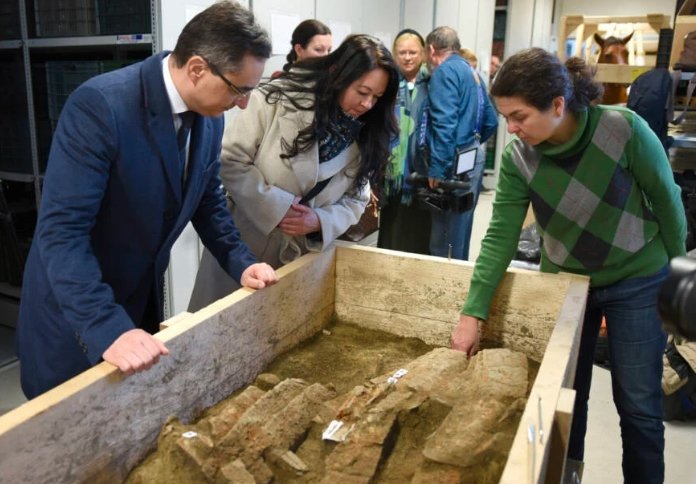Archaeologists from the Déri Museum in Debrecen have made a remarkable discovery near the village of Ebes in eastern Hungary. They have unearthed the grave of a 7th-century Avar warrior who was buried with his full set of lamellar armor, his weapons, and his horse.
Who were the Avars?
The Avars were a nomadic group of Eurasian warriors who originated from the steppes of Central Asia. They established a powerful empire, known as the Avar Khaganate, that spanned across the Pannonian Basin and parts of Central and Eastern Europe from the 6th to the 9th century AD.
The Avars were known for their military prowess and their invasions of the Byzantine Empire and other neighboring kingdoms. They were also skilled horsemen and archers, who used lamellar armor to protect themselves from enemy attacks.
Lamellar armor is a type of body armor that consists of hundreds of small rectangular plates, called lamellae, that are stitched together to form horizontal rows or bands. This armor was flexible, durable, and effective against arrows and swords.
What did the archaeologists find?
The archaeologists of the Déri Museum discovered the Avar warrior’s grave in November 2023, during an excavation project near the village of Ebes. The grave dates back to the early 7th century AD, and is one of the best-preserved Avar funerary sets ever found.

The grave contained the skeleton of the warrior, who was laid to rest with his lamellar armor, his wooden quiver with arrows, his bow, and his sword. The armor was placed above the warrior, and is the second complete example of such armor found in Hungary.
The grave also contained the skeleton of a horse, which was buried above the warrior. The horse was likely sacrificed as part of the Avar funeral rites, as horses were believed to have supernatural powers and to accompany the warriors in the afterlife.
The archaeologists also found some pottery and metal objects, such as a belt buckle and a ring, that were probably part of the warrior’s personal belongings or offerings.
Why is this discovery important?
The discovery of the Avar warrior’s grave is important for several reasons. First, it provides valuable information about the Avar culture, society, and warfare in the Early Middle Ages. The grave shows that the warrior was a high-ranking and wealthy individual, who had access to rare and expensive armor and weapons.
Second, it challenges some previous assumptions about the Avar history and presence in Hungary. The grave was found in a region that was previously thought to be outside the core area of the Avar Khaganate, suggesting that the Avars had a wider influence and control than previously thought.
Third, it showcases the exceptional skills and craftsmanship of the Avar people, who were able to produce and maintain sophisticated armor and weapons. The lamellar armor, in particular, is a remarkable piece of art and engineering, that has survived for more than 1,300 years.
The discovery of the Avar warrior’s grave is a testament to the rich and diverse heritage of Hungary, and to the importance of archaeological research and preservation. The Déri Museum is currently conducting further analysis and documentation of the grave and its contents, and plans to display them to the public in the future.














